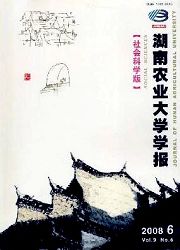

 中文摘要:
中文摘要:
选取联合国贸易统计数据库1996-2010年中国和印度对其主要贸易伙伴国农产品出口额数据,基于引力模型分析中印农产品出口影响因素的差异并测算农产品出口潜力。结果表明:地理距离、经济规模、人口规模、需求结构和政策环境等因素对中印农产品出口额的影响效应存在差异,其中,地理距离居于首位;农产品产业间贸易的特性决定了其不适用林德“需求相似论”,相反,其贸易额将随着两国之间需求结构差异的扩大而扩大;WTO自由贸易政策对中国农产品出口的积极效应高于印度;中印两国对其主要贸易伙伴国农产品出口潜力存在差异,中国农产品在亚非等发展中国家市场上呈现“出口不足”的现象。
 英文摘要:
英文摘要:
Basing on the gravity model, using panel data of agriculture products exported to main trading partners in China and Indian from 1996 to 2010, this paper analyzed the influence factors and estimated the potential for agriculture exports. The results showed that: a)distance, economic scales, population scales, demand structure and policy factor had different effects on China and Indian agriculture products exports, among which the distance affected most. b)The agriculture products trading, most based on inter-industry trade, was not applicable to the theory "Preference Similarity". On the contrary, trade volume would expand with the expansion of demand structure of the two countries, c)The WTO's free trade policies have more positive effects on China than India. d) China and India have different potential for agricultural exports, and on the markets of developing countries in Asia and Africa, agriculture products from China are significantlv less than India.
 同期刊论文项目
同期刊论文项目
 同项目期刊论文
同项目期刊论文
 期刊信息
期刊信息
